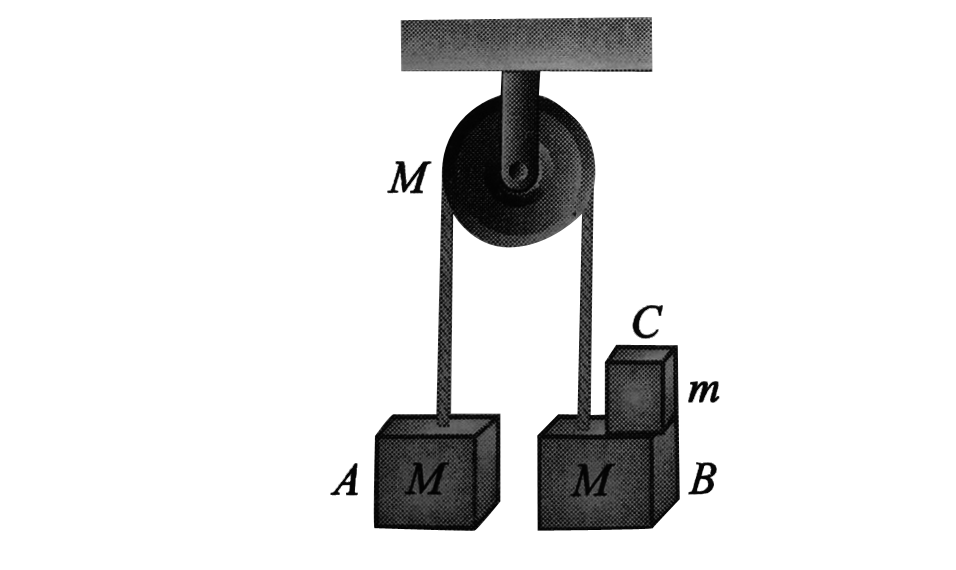
For the following system shown assume that pulley is frictionless, string is massless (m remains on M),
Q. Normal reaction on m is (force on C due to B)
Mmg2M+m
2Mmg)2M+m
MmgM+2m
2MmgM+m
The correct Answer is:B


Free body diagram C block mg−N=ma
N=m(g−gm2M+m)
Similar Questions
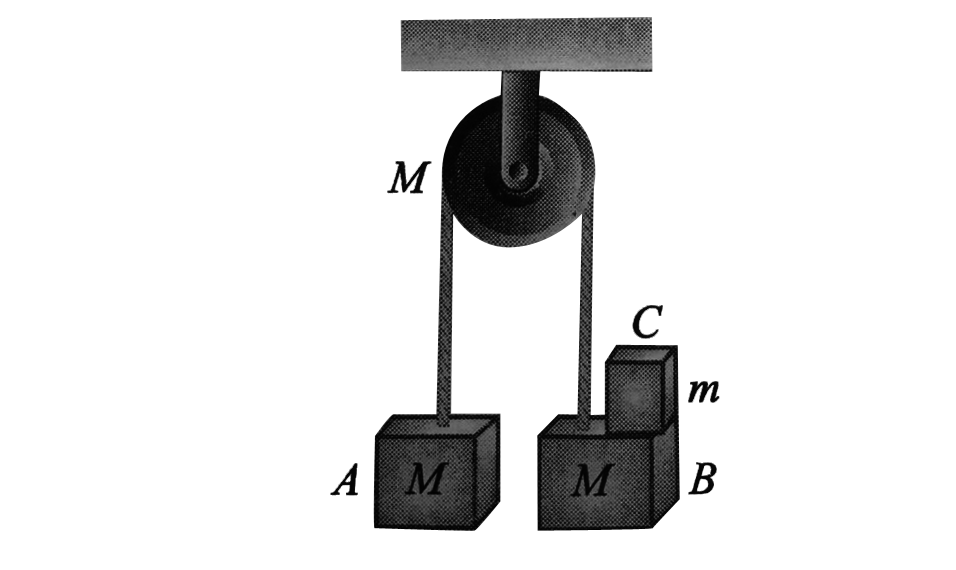
For the following system shown assume that pulley is frictionless, string is massless (m remains on M),
Q. The force on the ceiling isView Solution
For the following system shown assume that pulley is frictionless, string is massless (m remains on M),
Q. The force on the ceiling isView Solution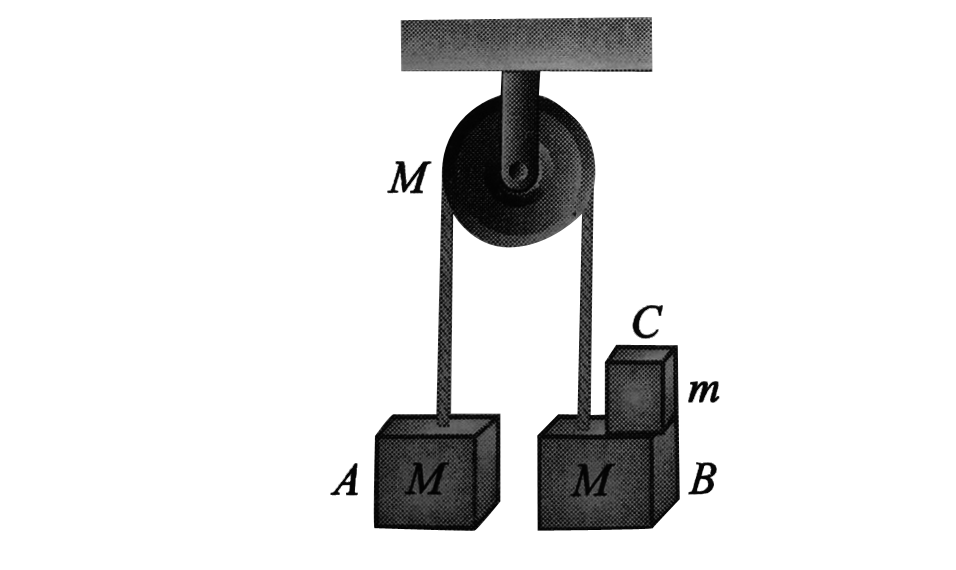
For the following system shown assume that pulley is frictionless, string is massless (m remains on M),
Q. The acceleration of the block A isView Solution
For the following system shown assume that pulley is frictionless, string is massless (m remains on M),
Q. The acceleration of the block A isView SolutionThe time period of block of mass m is (Assume pulleys and string are massless)
_PHY_E06_345_Q01.png) .View Solution
.View SolutionIn the arrangement shown, the pulleys and strings are massless. The acceleration of block B is :
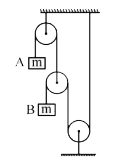 View Solution
View SolutionIn the system shown all the surfaces are frictionless while pulley and string are massless. The mass of block A is 2m and that of block B is m. The acceleration of block B immediately after system is released from rest is
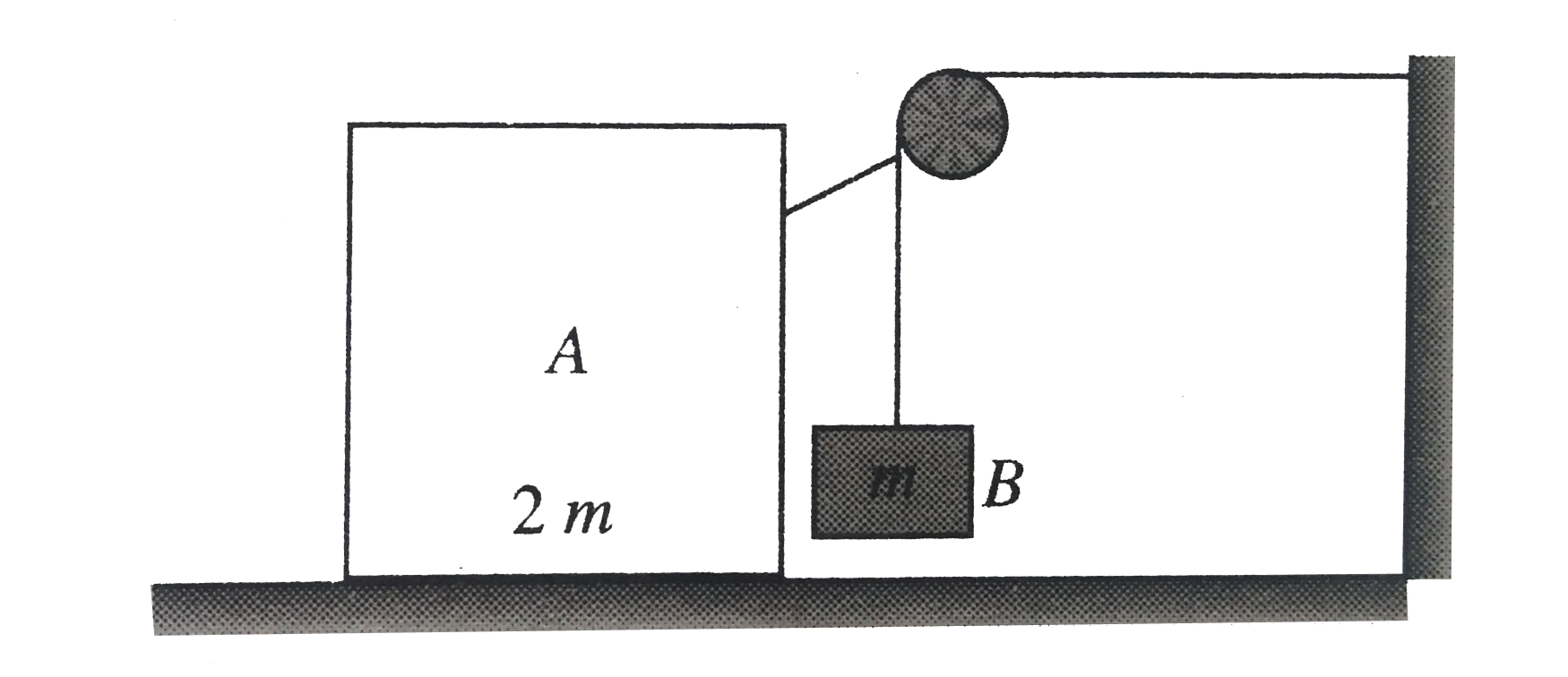 View Solution
View SolutionMA=3kg,MB=4kg,MC=8kg. Coefficient of friction between any two surface is 0.25 pulley is frictionless and string is massless .A is connected to wall through a massless right rod.
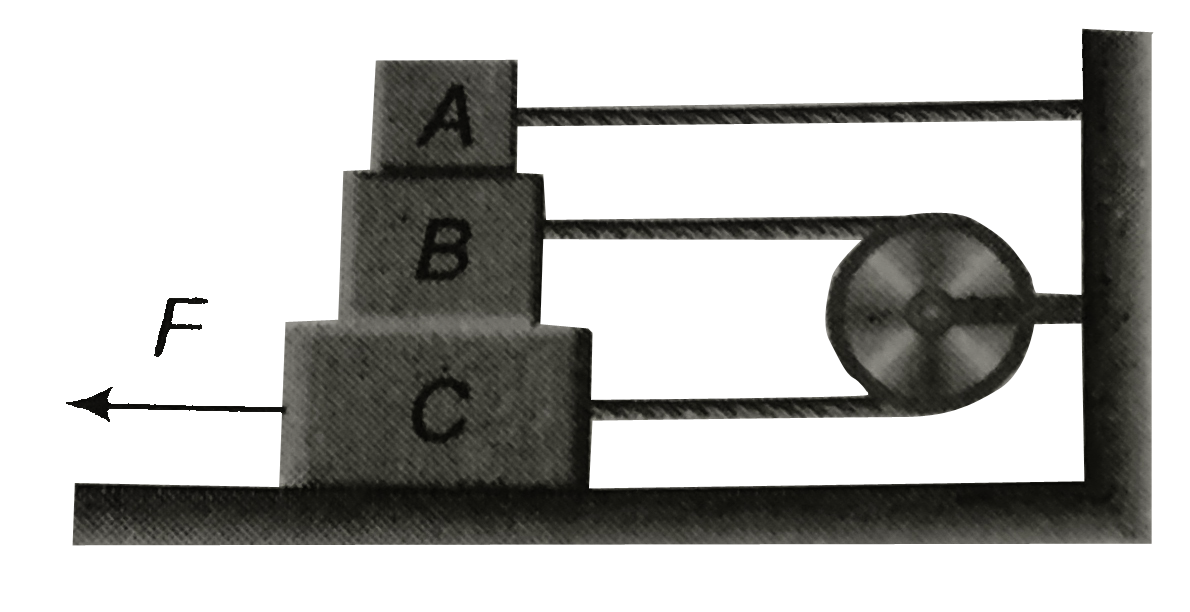 View Solution
View SolutionFor the system shown in the figure, the pulleys are light and frictionless. The tension in the string will be (Assume all surfaces to be smooth)
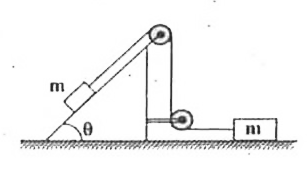 View Solution
View SolutionIn the system shown in figure all surface are smooth, string in massless and inextensible. Find:

(a) acceleration of the system
(b) tensionin the string and
(c ) tension in the spring if force constant of spring is k = 50 N/m (Take g = 10 m/s2)View Solution

